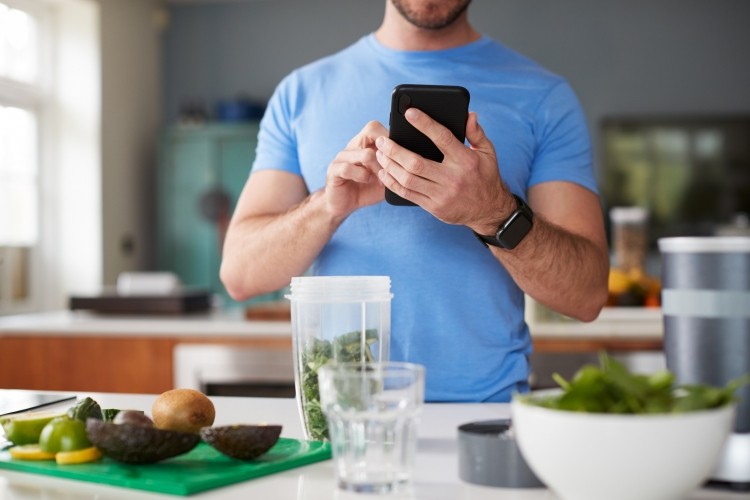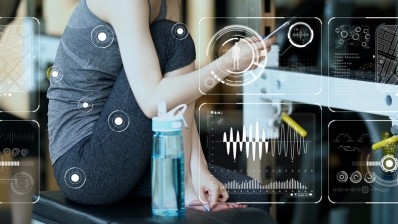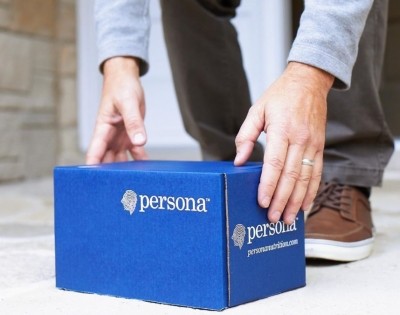Personalised nutrition: How can brands tap into the trend?

The growing interest in preventative health strategies is a key driver of the personalised nutrition trend but companies selling health-focused products will need to collaborate with tech innovations if they want their share of the opportunity, says Matthew Oster, head of consumer health at Euromonitor International, in his online webinar
Key drivers
He explains that at the core of the movement towards digital health is the movement towards long term and preventative health and Euromonitor's data reveals that, in recent years, the growth of prevention products sales has 'well exceeded' that of OTC products.
“Our expectation is that global sales of prevention products in value terms is going to be about a third higher than OTC drugs by 2024...
“This trend is critical as an underlying mechanism [of digital health]. People are engaging with products that give them longer term ownership of their own health."
Also driving interest in personalisation, is the fact that consumers are increasingly time-poor and therefore more willing to spend their money on shortcuts to enable them to improve their long-term health, says Oster.
He says digital health offers an easy way to get 'direct and frictionless advice, recommendations and solutions' tailored to the consumer to ensure the greatest likelihood of positive outcomes.
The global market research firm also points out there is a movement in terms of where consumers are getting health information from, and this is mirrored in nearly every developed country.
"The majority of consumers over 60 will engage with a doctor or medical professional and they will impact their decision," explains Oster. "Whereas, that declines substantially compared to those aged 15-29 where just over half say a doctor or medical professional impacts their decision making process.
“This, to me, is a signal that they are experimenting with other outlets of information… They are not filtering this through a medical intermediary. They are signalling they believe they have the ability to find and filter the best information for themselves and they don’t need a medical professional’s advice to do that.”
What's more, the proliferation of mobile technology also has also allowed this trend to prosper.
According to Euromonitor, in 2011, just 23% of the world population had smartphones. That increased to 72% by 2019. And in-line with the rise of use of mobile phone has been the rise in use of e-commerce.
“From 2010 to 2024, growth in e-commerce globally has been over 600% in absolute terms.
“We didn’t even have mobile e-commerce numbers in significant amounts in 2010. From 2011 to 2024, growth is 5000% in absolute terms."
Through its lifestyle survey Euromonitor found that, in 2015, about 7% of global respondents were using healthy tracking devices daily and this jumped to about 20% by 2019.
"Tracking has moved quickly from simple step counters to encompass a wide variety of health indicators," Oster adds. "You can measure caloric intake, sleep cycles, heart rate, blood glucose, menstrual cycles. And the technology is set to only improve and extend."
And the increasingly personal nature of these tracking devises has made consumers more open to allowing tech companies to handle their personal data if they feel it will provide them with health benefits.
Practical opportunities
In order to explain the key opportunities in digital health, Oster says its important to understand the "digital path to purchase", which he says consists of three key stages: recognition of need, evaluation and choice, purchase and delivery.
Recognising a need
Consumers might recognise a need 'reactively', such as when they notice symptoms of sickness, or 'proactively', when they want to consumer or do something to prevent a health issue.
Either way, Oster says that consumers are open to company outreach to guide decisions at this stage in their journey. But he says companies have struggled to replicate their offline marketing strategies in a digital way.
“They are relying mostly on consumer searches and consumer choice as opposed to helping them with that choice.
"You can see limitations with a product orientated approach. If you just have a product and hope the consumer will find it when they’ve recognised a need, you’ve already lost the game. And that’s why digital health can play a huge role at this stage, where there’s a high opportunity for partnerships.”
Whilst companies might assume consumers might not want to engage with a digital health campaign, Euromonitor's data suggests otherwise.
In a global survey in 2019, Euromonitor found that respondents would be open to using a number of digital health services, including fitness or personal training app, receiving medical advice online, using DNA testing.
Searching, evaluating, selecting
The second stage of the digital path to purchase is usually done online, says Oster, but businesses are often lacking a proactive approach whereby they introduce a product to the consumer before they even consult the internet for options.
"Many consumers are going online to determine what products to select. In general the prevailing strategy is a little too reactive and requires consumers to do the leg work – web advertising, landing pages, brand websites. The consumer still needs to search for it."
He explains that a proactive approach is more likely to be achieved through a tech-orientated partnership and by understanding exactly how consumers are getting information.
"Many consumers, of all ages, are using online browsing and healthcare related websites. But younger consumers are much more likely to use social media and online chat forums.
“You need to sustain engagement through these platforms to engage with younger consumers. But more importantly, what does this mean for the future?... Younger consumer, as they age, their behaviour will continue and if you are not engaging with these consumers where they are getting their information, you are missing out and potentially your competitors are going to swoop in and engage with your consumers where they sit.”
Purchase and delivery
It’s difficult to influence at this stage but companies can still work to get the edge over competition by providing that little extra customer service incentive, Oster argues. For example, French multinational pharmaceutical company Sanofi partnered with a delivery service in Latin America to increase promotion of its products and offer fast delivery.
British multinational consumer goods company Reckitt Benckiser also worked to offer exceptional service when it collaborated with a telemedicine company to offer consultations with medical professionals when consumers purchased specific products during the cold and flu season.
In conclusion Oster says that success in digital health is all about collaboration.
"It’s important to recognise the importance of collaboration and partnerships to offer something much broader and make your product more than just a product."








